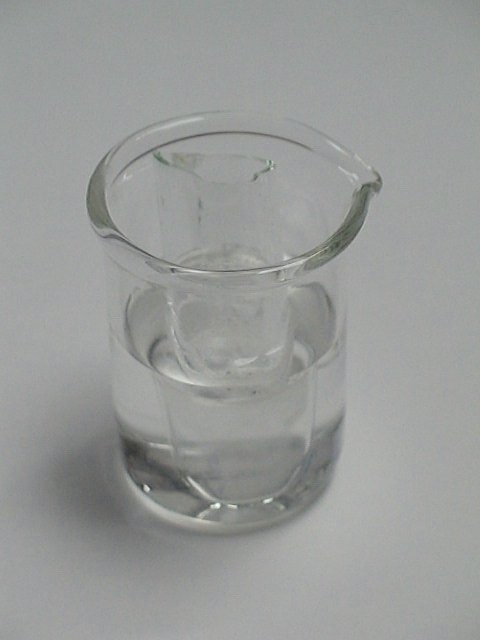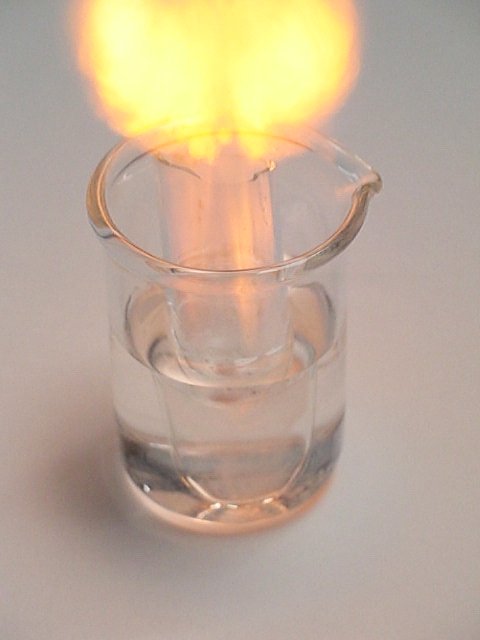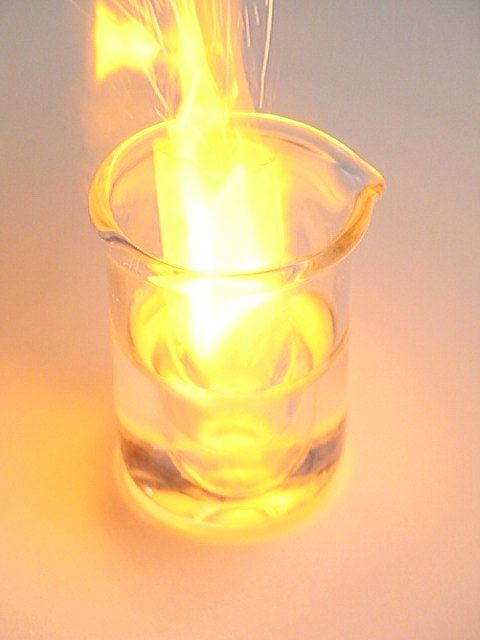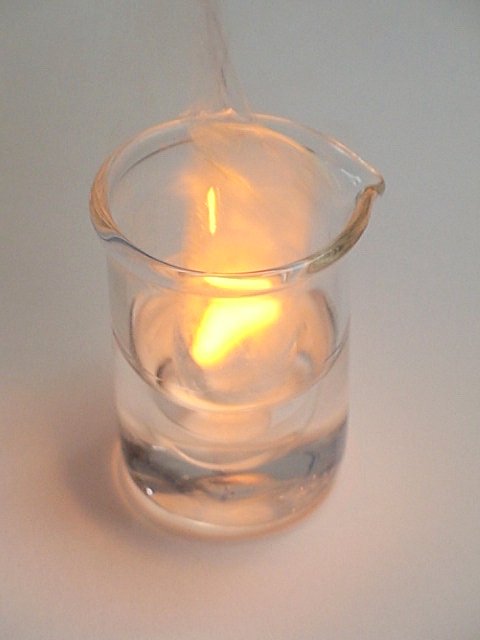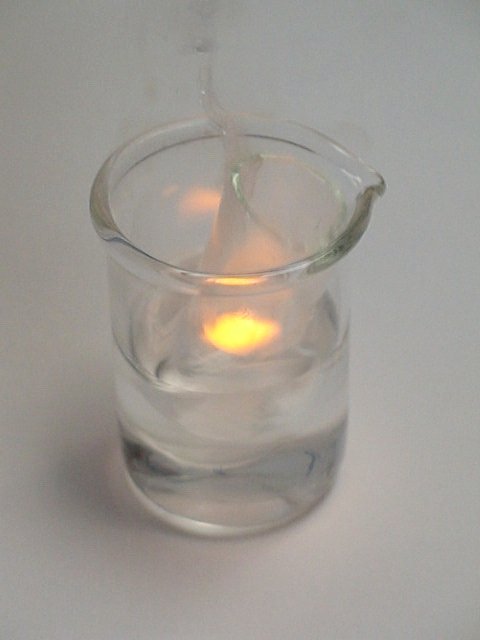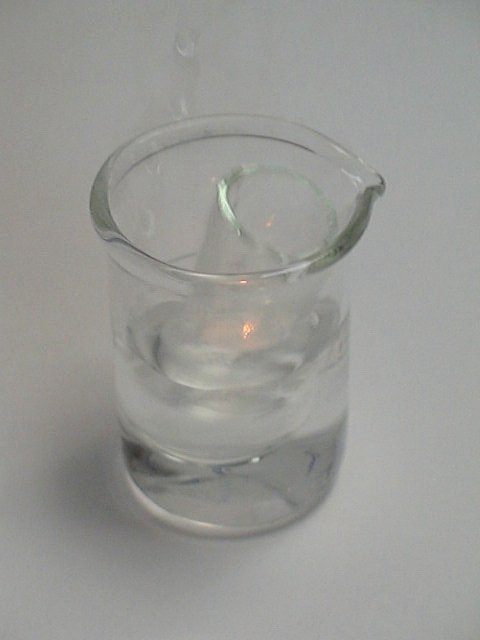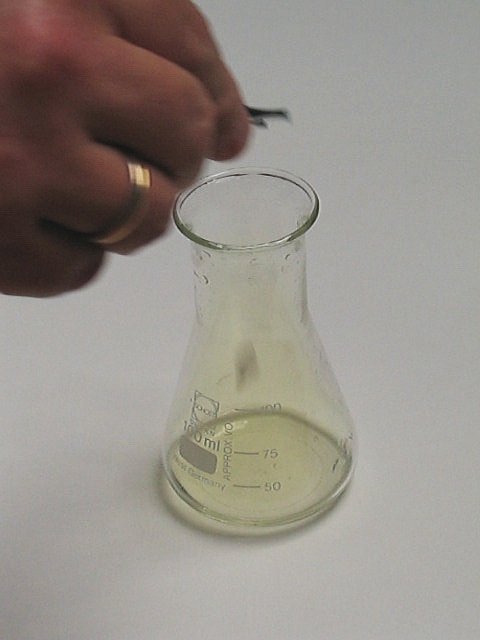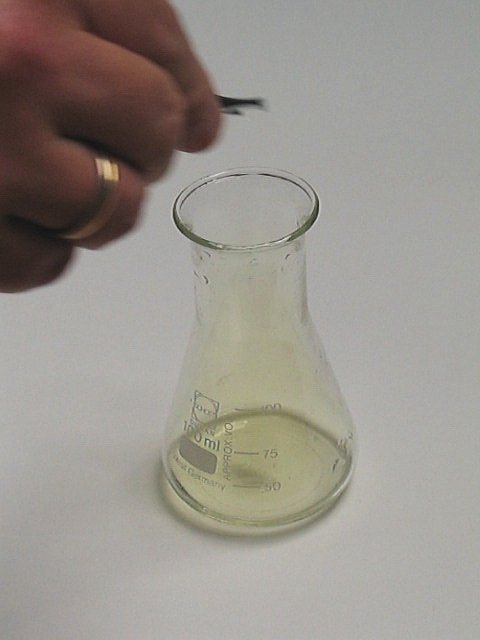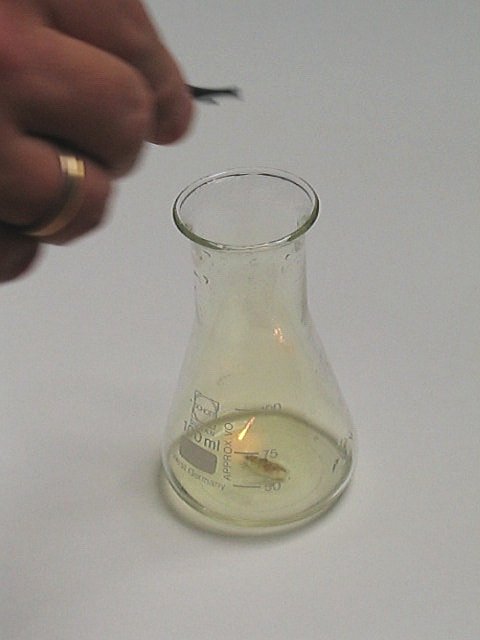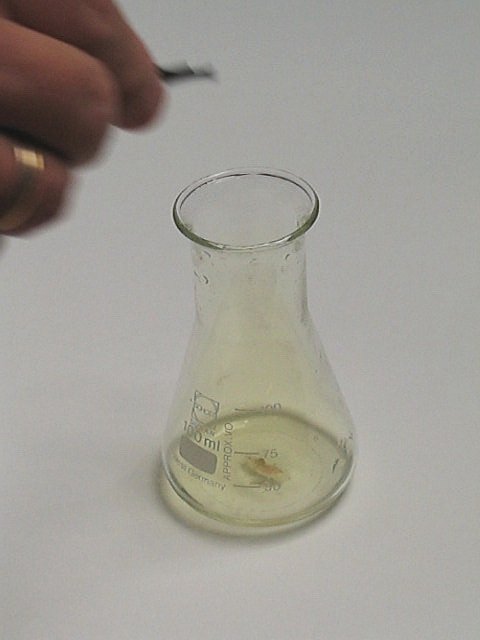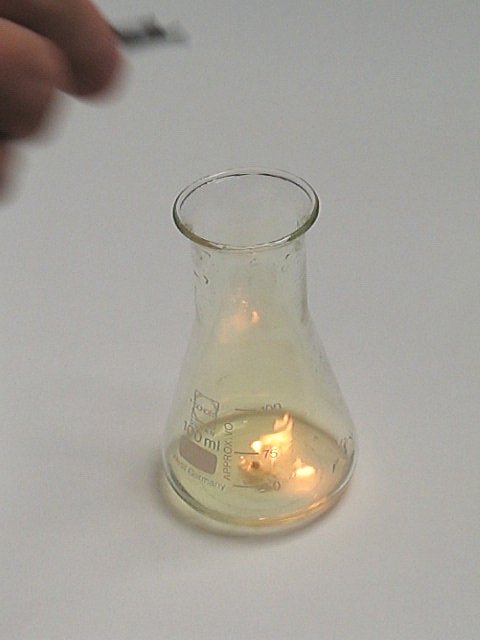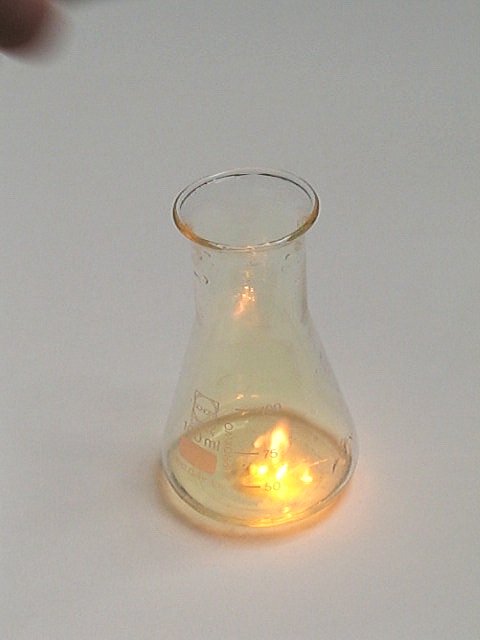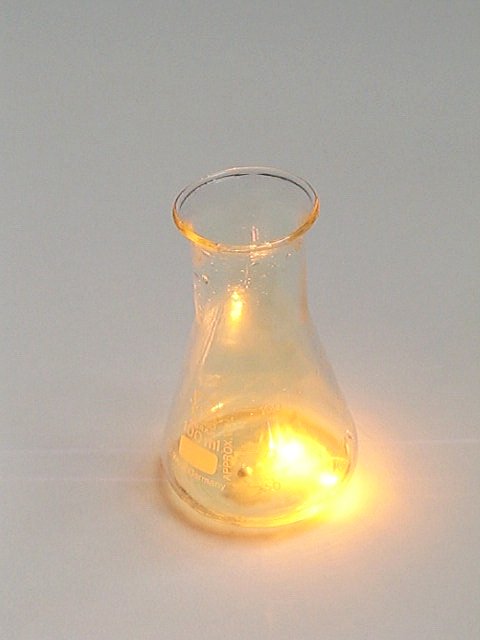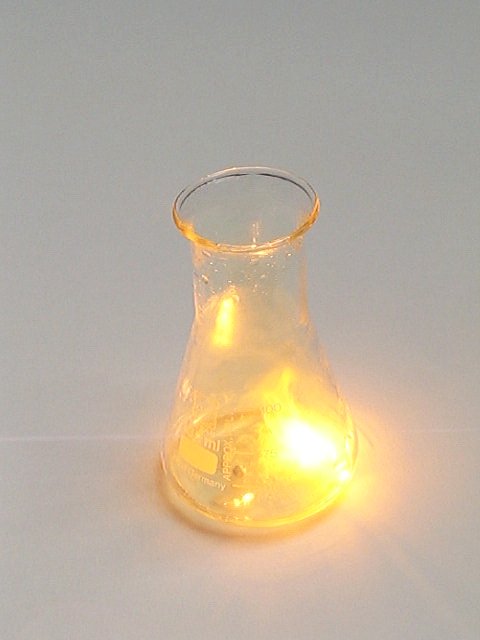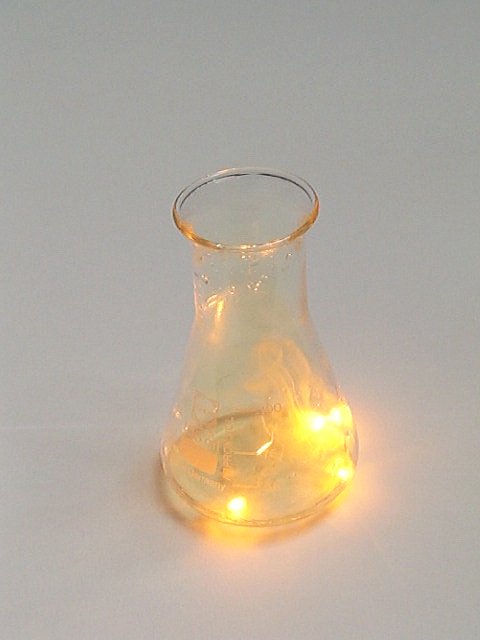


Dangers of sodium experiments
It is well known that sodium reacts violently with water, and even somewhat more violent with dilute acids. The same is true for the reaction between sodium and chlorine gas. Doing experiments with sodium and water can be quite fun, but under certain conditions, such experiments can be surprisingly dangerous.
Sodium produces a lot of hydrogen gas, when combined with water, but also a lot of heat. With water only, usually insufficient heat is produced to ignite the hydrogen gas. With dilute acids, however, ignition of the hydrogen gas is quite common. It certainly does not happen always, but there is a good chance that this happens. If this happens, and the gas is produced in a somewhat confined space, then a real explosion may occur. When one is not prepared for that, this can have bad consequences.
In this experiment, a piece of sodium was put in a small broken test tube, which in turn was put in a small 25 ml beaker. The setup was as follows:
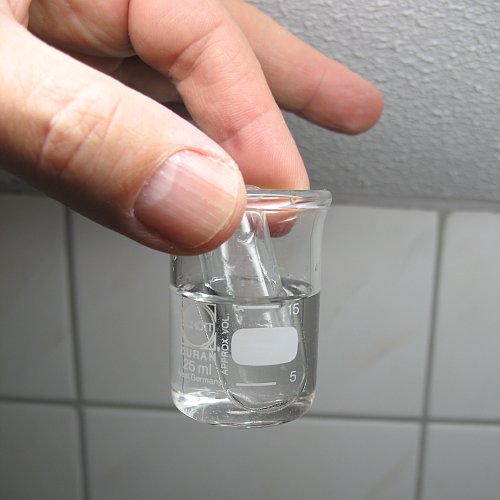
The small test tube is partially filled with dilute hydrochloric acid (10% HCl). To this small amount of acid, a small piece of sodium is added. This results in formation of hydrogen gas. The piece of sodium melts and a small sphere is formed, which is 'dancing' over the surface of dilute acid. At a certain moment, a loud bang occurs, quite some liquid is thrown out of the test tube and the piece of sodium catches fire.
Below follow some pictures, just before the explosion, the moment of explosion and just after the explosion, where the sodium burns. The total time, covered by the 6 pictures below is approximately 0.2 seconds.
A video is made of this, and this video nicely demonstrates the loud explosion. This video definitely must be played with sound on! The video can be dowloaded here: Na_HCl.avi. Download size is approximately 1 MByte.
![]()
Sodium and chlorine gas, initiated by water
When sodium is thrown in water, under a chlorine atmosphere, then it immediately ignites. Without water, sodium does not ignite at once in chlorine gas. This experiment, however, also is quite dangerous. As the video demonstrates, the fire stops at a certain moment, and then the danger sets in. Hydrogen is formed, which, when mixed with chlorine gas, forms an explosive mixture. The heat of the reaction between the sodium and the water (and also chlorine above the water) may ignite the mix of hydrogen and chlorine. The video shows something which is not very wise to do. If this mix had exploded, there would have been a good chance that the erlenmeyer was shattered!
The video of this reaction can be downloaded here: Na_Cl2.avi. Download size is approximately 1.5 MByte. Below, 9 frames of this video are shown.
![]()
For all pictures in this webpage, a higher resolution version can be obtained by clicking the picture. The full size image then appears in a separate window.
